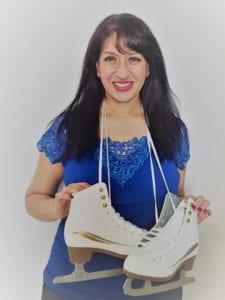Professional E-Portfolio
My occupational therapy career began after graduating from McGill University in 1997 in Montreal, Canada. I provided OT services in acute care and short-term rehabilitation for one year prior to moving to Brooklyn, New York in 1999. I continued to gain experience in adult acute care services for another five years prior to taking a managerial position in inpatient rehabilitation. In that position, I learned administrative leadership skills which set the foundation for leadership as a clinical specialist, within the NYU Langone Health organization. In 2014, I earned the certified hand therapist (CHT) credential, which elevated my employment position to program specialist. In summary, I have been an occupational therapy practitioner working with adults with physical and cognitive disabilities for 23 years. During this time, I have not treated the pediatric population in my everyday practice as an occupational therapist. In 2017, our organization’s physician referral base expanded and I received multiple requests for assistance with pediatric custom orthosis fabrications by junior therapists. I quickly learned that the typical thermoplastic materials were either too rigid or not cosmetically appealing for the pediatric population. Therefore, I chose to advance my orthotic fabrication skills for the pediatric population. I believed the best way to provide this service was to expand my knowledge about the special needs for this population and develop a meaningful product, supported by scientific evidence, that could be reproduced by working with the team of therapists. As such, I aimed to increase my knowledge about pediatric custom orthoses, learn creative solutions, and utilize and strengthen my leadership skills for staff training; through the clinical doctorate program at New York University in 2018.
My e-portfolio centered around the metaphor “Balancing on Ice”. This metaphor was used as a progression of technique and risk. Like a delicate spin on one skate blade, when mastered with the right coaching, results in a beautiful skill. Although figure skating is an individual sport, as a former figure skater, I was keenly aware that any success is because of a supportive team.
With teamwork in mind, I set out to develop professional leadership skills which would elevate OT‘s role in research while collaborating with physicians within the outpatient NYU Family Health Centers. I sought to further my leadership skills to not only inspire and foster growth in individual OT staff, but also to build a bridge between pediatric and adult occupational therapists within the organization. Therefore, the NYU OTD degree not only provided me with the skills and the confidence for personal growth, but also to represent OT in research, and to explore a future career goal of academic teaching.
Professional Goals
SIT SPIN
Goal 1: Demonstrate advanced competence in pediatric orthotic fabrication, by creating a product using knowledge from scientific research and link to occupational therapy frames of reference.
AOTA Standards of Continuing Competence: Standard 1. Knowledge and Standard 2. Critical Reasoning and Standard 4. Performance Skills.
Artifact 1 – Expanding Orthosis Fabrication Knowledge to Pediatrics
Artifact 2 – Competence Project: Development of Pediatric Orthoses using Atypical Materials
CAMEL SPIN
Goal 2: Disseminate newly gained knowledge and resources for custom fabricated, pediatric orthoses, by delivering professional presentations and mentoring staff.
AOTA Standards of Continuing Competence: Standard 2. Critical Reasoning and Standard 3. Interpersonal Abilities.
Artifact 1 – Pediatric Orthoses Professional Presentation
Artifact 2 – Starter Kits of Atypical Orthosis Materials
LAYBACK SPIN
Goal 3: Demonstrate advanced competence in interprofessional collaboration and leadership.
AOTA Standards of Continuing Competence: Standard 3. Interpersonal Abilities and Standard 5. Ethical Reasoning.
Artifact 1 – Publication: Hand Function Following Simulated Fusion of Thumb MCP and IP joints
Artifact 2 – Interpersonal Leadership Abilities
Artifact 3 – Academic Cover Letter
SYSTEMATIC REVIEW: Facilitating Communication of Pain for Children with Severe to Profound Intellectual Disabilities when Applying Custom Orthoses: A Systematic Review of Behavioral Pain Assessments
RESUME

